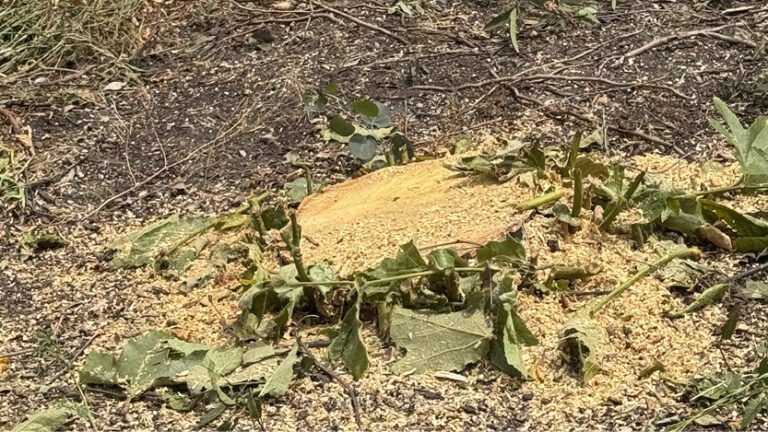
After surviving the Palisades Fire, dozens of trees in the Las Flores area were cut down by city-commissioned arborists
Some Las Flores residents expressed shock recently to return home to find scores of trees in their eastern Malibu neighborhood cut down. Thinking the trees had survived the devastating Palisades Fire, a group of residents asked The Malibu Times to look into what happened to their beloved greenery that brought them hope after the last few dismal months since the latest Malibu disaster.
The City of Malibu contracted with Newbury Park Tree Service (NPTS) and its two arborists to conduct an assessment of hundreds of trees, focusing exclusively on trees located in easements next to city-facilitated roadways that may have sustained damage in the wildfire. In a letter dated June 13 to the City of Malibu from Newbury Park Tree Service it stated: “Our findings indicate that all trees included in this report were subject to significant fire exposure, resulting in extensive bark char, crown loss, cambium damage, and compromised root structures. Based on industry standards and ISA (International Society of Arboriculture) guidelines, these trees exhibit a high mortality rate and a very low likelihood of survival or long-term recovery. The assessment details the condition of each tree, with photographic documentation and hazard evaluations where applicable.
“Due to their current condition and potential to pose a safety risk to people and property, we recommend that the trees identified be removed or managed accordingly.”
The city, working with its landscape contractor, Enhanced Landscape Management Services, did take action by removing trees that were deemed unsafe by the arborists.
Near Las Flores Creek Park, there are stumps revealing where trees once stood. A total of 19 trees were felled in the Las Flores area including Sumac, Sandpaper, Acacia, and Carolina Cherry that had been deemed in critical condition or dead.
A city spokesperson wrote of these trees: “They were planted upon the development of the park and were not old-growth trees. Due to the severity of the damage, a certified arborist deemed it necessary to remove the trees to mitigate risk to the public who would be walking on the adjacent pathways. The city will replace the trees with appropriately sized native trees as soon as we replace the surrounding irrigation and other infrastructure that can guarantee their success. The Community Services Department’s goal is to keep native trees whenever possible and have kept fire-damaged trees intact in open spaces that do not pose a public risk. Fortunately, the old-growth sycamore trees near the Las Flores Creek Park playground survived and are looking healthy at this time. We will continue to monitor all the trees in the park, and where we can, we will leave trees in place that do not pose a risk to future park patrons or park infrastructure.”
A detailed report issued by NPTS focuses on individual neighborhoods impacted by the fire. Two pages concentrating on Big Rock show 91 trees all recommended to be “flushcut” meaning a stump is left flush to the ground. They include Canary Island Pine, Acacia, Indian Coral, Stone Pine, Sumac, Poplar, Cedar, Eucalyptus, and Ficus. The trees were found in various states of condition, from poor, to critical, to dead. All 91 of the trees were deemed unsurvivable and unsafe if not removed.
In Carbon Canyon NPTS identified 52 trees including Cedar, Sumac, Eucalyptus, California Pepper, and Pine, all recommended for flushcut.
Data indicates 36 trees on Rambla Pacifico are deemed either dead or with no chance for survival despite some residents noting there were green shoots coming from the damaged trees after the fire. A NPTS arborist confirmed the trees were targeted for removal to mitigate a future risk to the public. Rambla Pacifico trees identified were Sumac, Canary Island, Eucalyptus, Coast Live Oak, Aleppo Pine, Stone Pine, Cypress, Monterey Pine, Arroyo Willow and Olive.